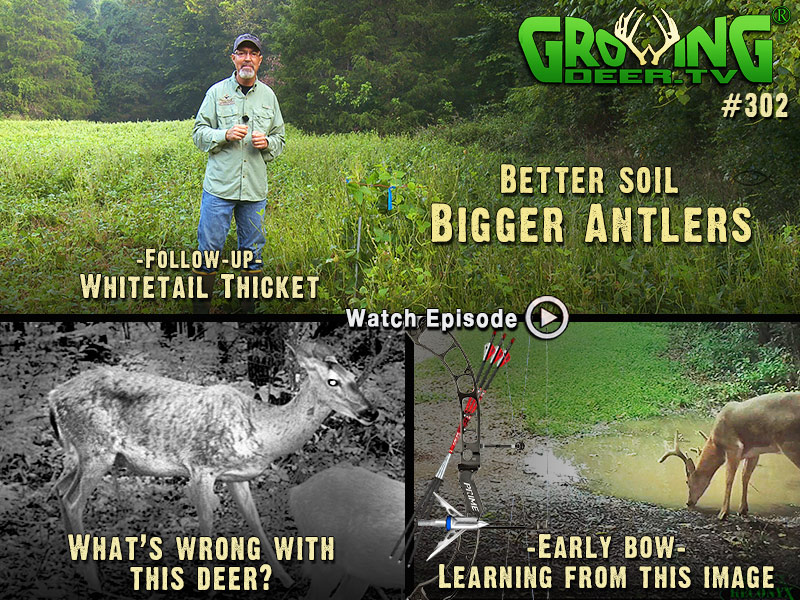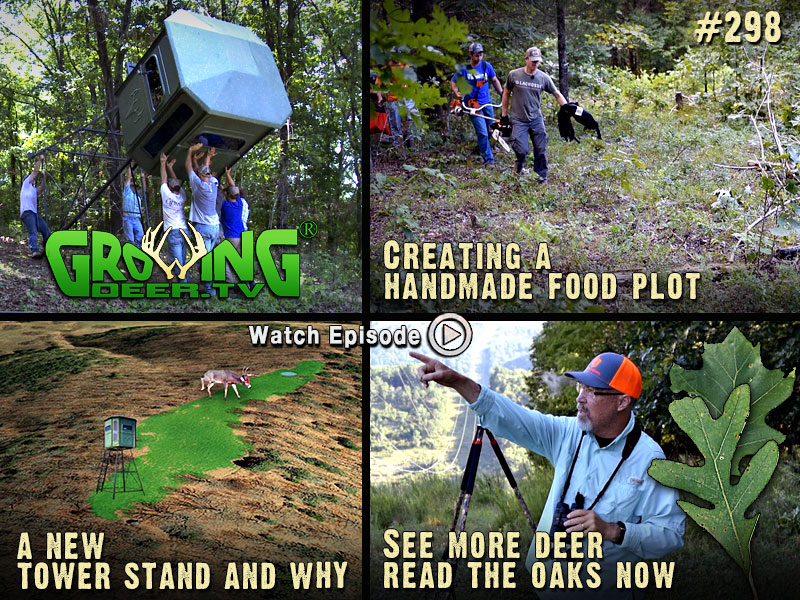Category: Hunting Tactics
Deer Hunting Reflections
As the close of season draws near, it is almost time to slow down and reflect on the blessings of the season. Those blessings are not always wrapped up in harvests. Much of the time spent reflecting is looking back at the memories shared with others and lessons learned from the Creator while afield.
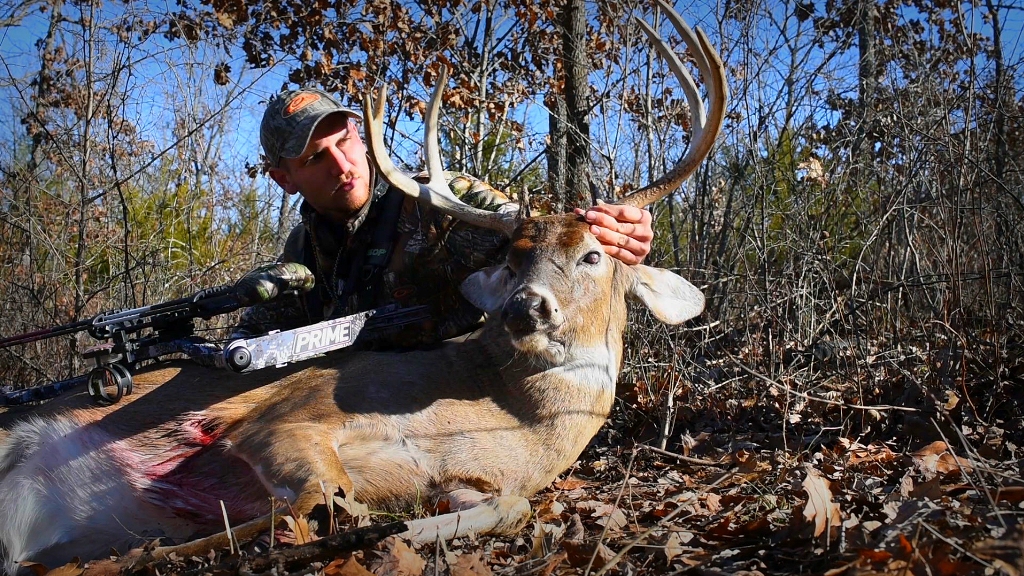
Reflecting on the late season harvest of a buck we called “Gappy.”
I recently moved to the Midwest from the mid-Atlantic region and some noticeable differences in hunting strategies became apparent to me. While back east, I had the opportunity to hunt in many urban areas. At first it was a new style of bow hunting for me. It was not only unique and intriguing, but offered new challenges. I found myself taking less time to strategize about food sources than ever before. I spent the majority of my time focused specifically on bedding and bottlenecks. This was due to the lack of cover available. I identified this as the limited resource and took advantage of it. I noticed many times deer feeding in ball fields, golf courses, or even backyards. Obviously I wasn’t able to focus hunting efforts there, so my approach differed from hunting in the mid-west.
This year our approach hunting throughout the Midwest changed drastically as the season progressed. Early season our focus was on white oak acorns, then transition areas, and then back to food sources (which depended on the weather to determine what food source was preferred at that time). Differences like these can be seen throughout much of the whitetails range, different properties within the same region can witness different types of deer activity. Differences in deer activity where you are hunting can present a unique set of challenges. These challenges force us as hunters to strategize and execute plans with the fullest intention of being successful.
No matter the location or size of your Proving Grounds, it offers areas or times of the year when you can be successful. Your property may hunt best during early season or perhaps it’s a small property with a main travel corridor and hunts extremely well during the rut. Whatever strength it may have, take time to note the patterns you see on your Proving Grounds. Begin to strategize how you will approach the next hunting season. Plan out your management projects for the year and start preparing for the season opener! If you wish to have different results in the hunting seasons to follow, then a new approach should be taken. Make the most of this period of reflection!
Enjoy your season of reflection,
Matt
Warm Winter Food Sources
Temperatures have been extremely warm throughout December here at The Proving Grounds which has made for some tough hunting. Typically December can be a great month to pattern deer! Temperatures normally are dropping as winter sets in and deer head to food sources like soybeans and corn. With the temperatures we’re experiencing this winter, we’ve had to change from our usual late season setups.
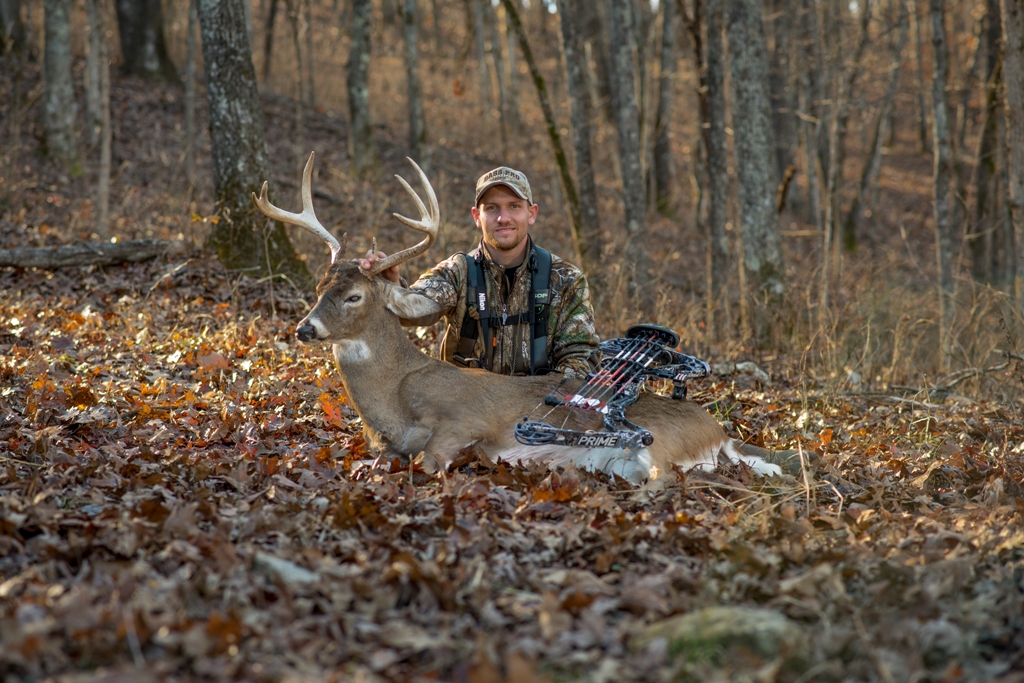
Matt Dye was able to harvest “Gappy” after we found a pattern of deer using a ridge with known red oak acorns on the ground.
Food sources like Eagle Seeds Broadside blend, clover, or acorns might be the ticket to success during warm years like we’re experiencing now. We’ve been watching our Reconyx cameras a lot lately trying to find the food source with the most activity and red oak acorns seem to be the best! Red oak acorns are more acidic than white oak acorns. Therefore, deer don’t usually eat them as much during the early fall. As the fall progresses the red oak acorns break down, making them less acidic and more favorable to deer. Here in southern Missouri, we had a big crop of red oak acorns and we’ve spent a lot of time hunting around them. Last week Matt and I had a great morning in some red oaks when Matt shot Gappy, a big wide 8 point.
Don’t be afraid to change your tactics at any point during the season! As the weather changes during the fall, your hunting tactics will most likely change as well!
Daydreaming of whitetails,
Adam
Staying Successful Through Deer Season Despite Warm Temperatures
Hunting season is still open but with conditions unseasonably warm it’s tough to catch deer on their feet before dark, especially if you’re hunting a food source. Under these conditions hunters often debate if they should head to the Summit stands or just stay at home with family. We wonder, “Is it even worth going to the woods?” Deer have adapted to the warmer temperatures and so can we.
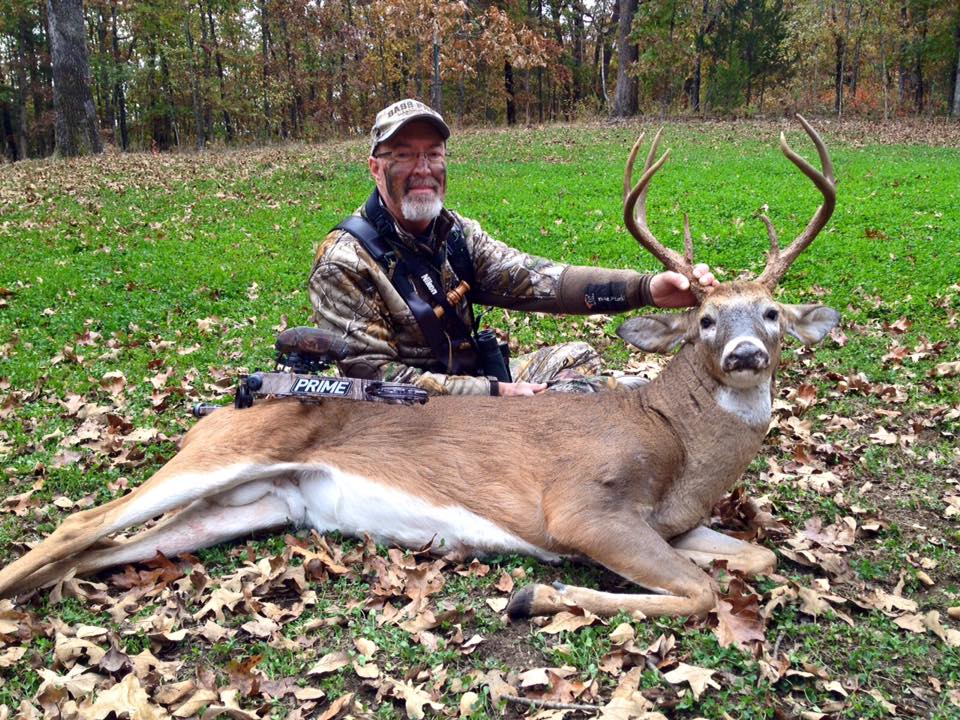
Grant with Blind 8, a buck harvested over a stand of clover this fall.
Warmer temperatures during December mean a few different things for whitetails. Normal bedding areas may change. We typically see many deer bedding on the south facing slopes during this time of year to soak up the warmth of the sun. However, with the warm temperatures the deer may be bedding on the north slopes to remain cool. This information helps us develop a game plan for hunting. Warmer temperatures mean deer will not need to feed as much. Similar to early season tactics, we will hunt food sources close to bedding.
As bedding areas will change, so will the food source deer are using. Deer will not need grains like soybeans and corn during warm spells. High energy food sources like soybeans or corn produce more heat when digested. Deer help to regulate their body temperature with the food they eat and where they bed. With warmer than normal temperatures, deer will opt to feed on forage like clover or wheat. Warmer temperatures provide great growing conditions for clover and wheat which means they’re green, highly attractive, and still palatable even during late season.
If you are experiencing warmer than average temperatures, try changing your tactics from your normal late season strategy. Take an early season approach, hunt close to bedding areas near a food source you know deer are using. This approach should allow you to remain successful throughout the season, despite the above average temperatures and unfavorable hunting conditions.
Growing Deer together,
Matt Dye
How Photoperiod Affects The Rut
There have always been discussions among hunters to what influences the timing of the rut. There are many theories out there, but none provide the factual information based off of physiological processes that occur in deer like photoperiod. Photoperiod is simply the change in the amount of darkness throughout a given day. Summer days are longer than winter days, based on the amount of light there is each day at these times of year. Deer take notice of these photoperiod differences throughout the year and as a result they trigger behavioral and bodily changes.
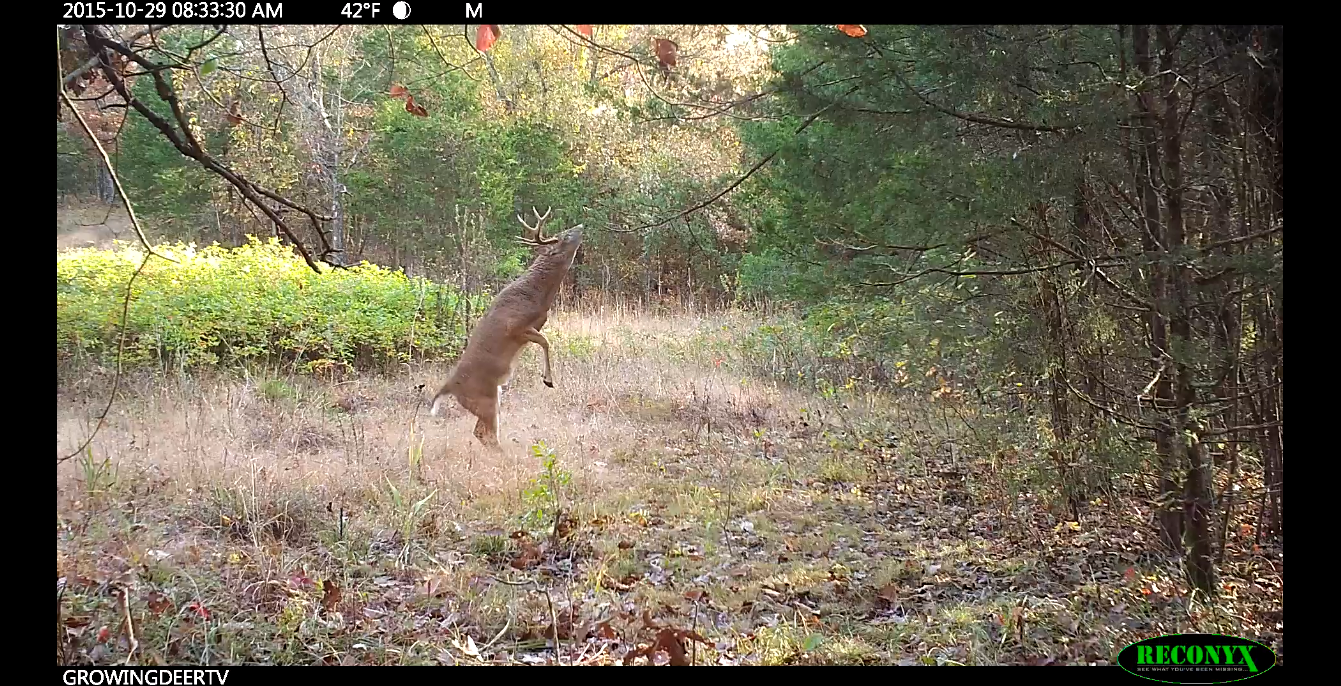
A mature buck we call Herman is active during daylight working a scrape during late October.
As light fades from late summer into fall, deer sense this through nerves in their eyes. These signals travel into the brain and determine the amount of melatonin that is produced. When melatonin is produced it then creates a spike in testosterone in bucks and estrogen in does. It is widely known that both testosterone and estrogen are hormones that influence reproductive behavior.
As you know from hunting through October and the time leading into the peak of the rut, bucks and does will exhibit rutting behavior. This can be observed through scraping activity. During early October when the days are longer, with less darkness, the scraping activity is less. However, during late October before actual breeding begins, scraping activity is extremely high. This is not simply ironic, as darkness increases during the month rutting behavior increases as well.
Another important note on photoperiod is that the rate and timing of the photoperiod changes do not differ from year to year in a given location. This is why deer behavior on your Proving Grounds occurs routinely each year. You may not experience the same level or intensity of action each year, but remember weather determines daily deer movement. Warm spells during November do not mean does will not get bred, it may simply mean you may not experience the same rutting activity, but rest assured, the rut still occurs at this time.
How does this help you as a hunter? Now you know what influences the timing of the rut. Most importantly you know that the influencing factor, photoperiod, does not change from year to year. As you prepare for the rut and schedule time off or time afield, I suggest you do so at the peak of pre-rut activity. The odds are in your favor the most at this time because bucks are chasing and have not yet been locked down by receptive does, offering more opportunity for you to cross paths with one of your hit list bucks. I hope you take the time to study and further read on photoperiod as it also determines many other important events for whitetails each year.
Growing Deer together,
Matt Dye
October Hunting Strategies
The middle of October can mean a lot of things for hunters throughout the whitetail’s range. For the GrowingDeer.tv Team it usually means we start adjusting our hunting strategies. Along with testosterone levels rising, deer behavior and their preferred food sources are changing. With these changes it’s important that we adjust our approach to coincide with deer movement.
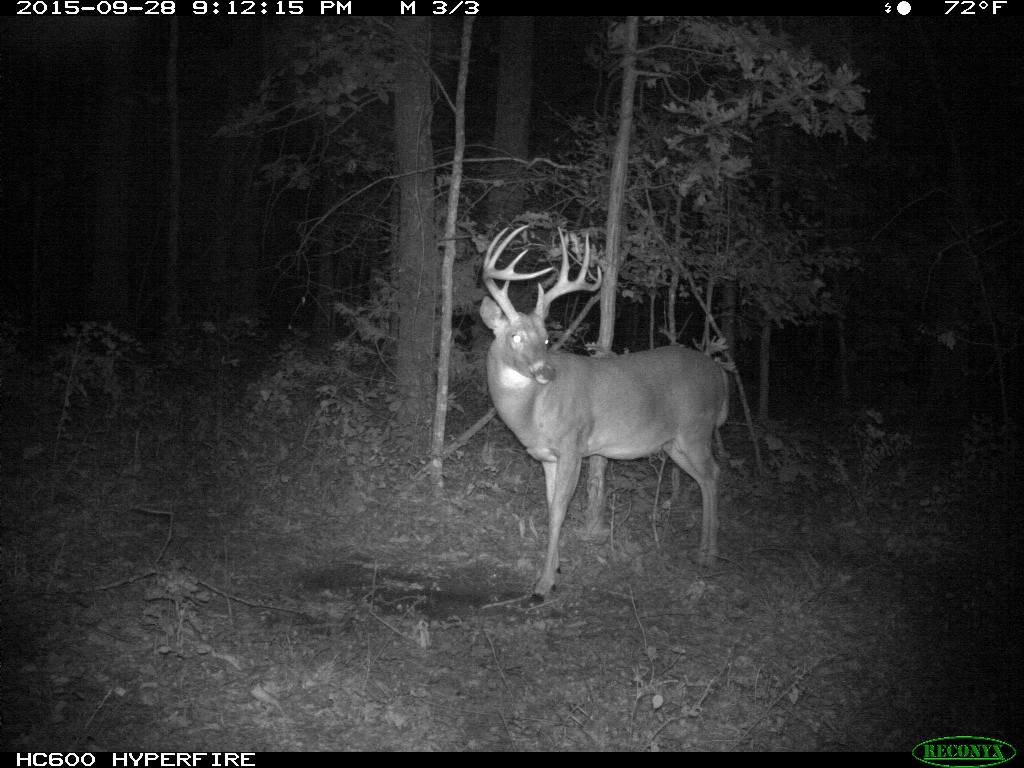
Swoops (pictured above) is a mature 9 point that Grant and I encountered opening day in a food plot. He is showing up on Reconyx trail camera images in an area dominated by oaks.
When season opens up in the middle of September we focus on food to cover setups. We’re usually hunting between bedding areas and an Eagle Seeds Broadside plot or a White Oak tree that’s one of the first to drop acorns in the area. Once October starts, more and more acorns have fallen and the deer spend more time in the timber. The disadvantage for us is nearly 80% of The Proving Grounds consists of timber and a large portion is oaks. This means acorns can be found in most places on the property. Instead of trying to find one tree the deer are utilizing, we must change our approach and start hunting bottlenecks and travel corridors. Finding a single tree that deer are using is almost impossible. Finding the bottleneck deer are using to get to those trees is something we can do!
Changing food sources during October is also something hunters in crop regions can relate to. A large portion of soybeans and corn will be removed during the fall causing drastic changes in deer movement. Successful hunters have to adjust their hunting strategies to correlate with the harvesting of crops.
Deer hunting strategies are ever changing throughout the fall. Don’t get caught using the same strategy throughout the season! It’s time to start focusing on hunting travel corridors and bottlenecks.
Daydreaming of whitetails,
Adam
How To Hunt Staging Areas
Staging areas are some of my favorite stand locations! I hunt most often at The Proving Grounds, in the Ozark Mountains of southern Missouri. The area is primarily timbered with few natural openings. In this type of habitat deer, including mature bucks, seem to readily use small openings before larger food plots, etc.
I’ve created several staging areas by clearing brush and trees. Some of these are simply nooks off larger food plots and some are 100 to 200 yards away from a primary feeding area. I often place Trophy Rock’s Four65 mineral in the staging area as well as maintain it in Eagle Seeds’ Broadside blend. I almost always create a mock scrape in the staging area also! This combination of mineral, forage that is attractive during the hunting season, and a mock scrape has proven extremely effective at attracting mature bucks during daylight hours.
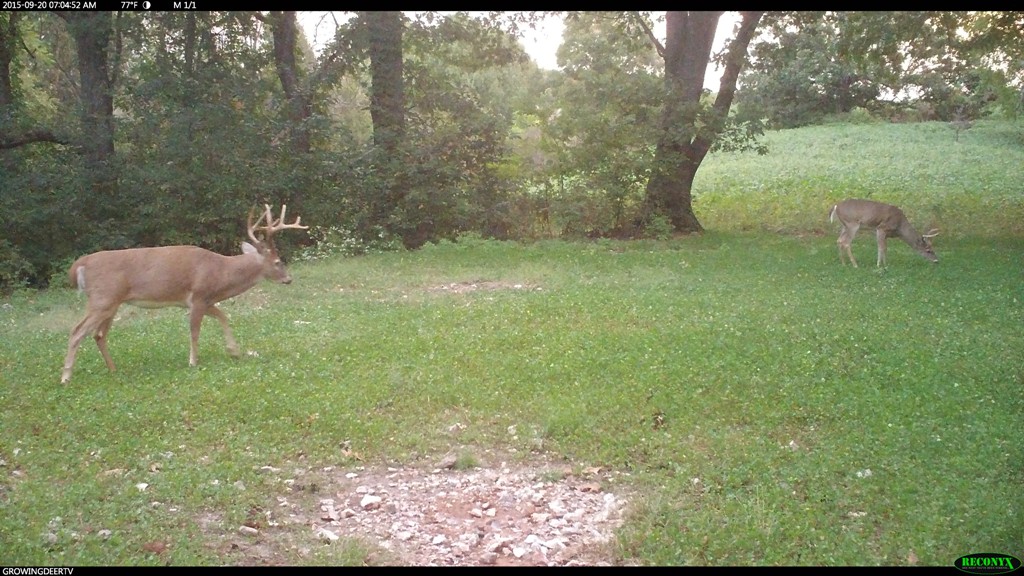
This is a buck we call King using a staging area before entering a large food plot.
It’s very important to find or create staging areas that allow hunters to approach without alerting deer. This means the approach, hunt, and exit need to occur so that deer in the local bedding and feeding areas won’t be downwind of the stand/blind location. This characteristic of staging areas is probably the most important determinant of its location!
Staging areas give hunters a big advantage that’s rarely discussed. Because staging areas are usually between primary bedding and feeding areas, it means deer are traveling through them. This means hunters can often approach staging areas before a morning hunt and/or leave them after an evening hunt without alerting deer. This is in contrast to hunting both bedding and feeding areas where it’s often difficult to approach during the morning or leave after a hunt without alerting deer. Therefore staging areas can often be hunted more frequently without “burning out” the stand.
I’ll be hunting staging areas this fall! Whether you find a natural staging area or establish one I hope you have an opportunity to hunt these great habitat features also!
Growing Deer together,
Grant
Deer Hunting: Beating The Heat
Fall is here and that means deer season! Many hunters have already had the opportunity to hit the woods. If your season has not yet opened or you are waiting for your first opportunity, chances are you are excited.
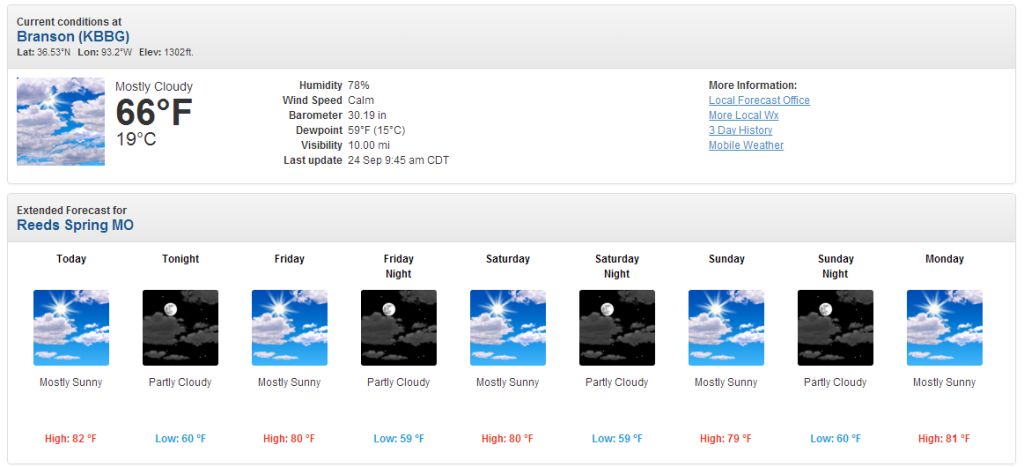
The forecast is calling for warm temperatures at The Proving Grounds. We will have to try to stay cool while hunting this week.
Unfortunately, early season hunting is usually paired with warm temperatures. If hunters do not adapt their hunting techniques for warm temperatures, they may regret it later. Hunters often wear long sleeve shirts and long pants and it doesn’t take long to begin sweating. Sweat smells and is hard to hide. As hunters, we want to reduce our scent while in the woods. Here are a few tips to help fight early season temperatures.
- Wear lightweight clothing. Breathable and vented clothes help keep your body temperature low.
- Wear a short sleeve shirt to the stand. Once you are in the stand, switch to a long sleeve shirt. Minimize scent by placing the short sleeve shirt in a gallon Ziploc® bag and store it in a backpack.
- Leave a few minutes early. Having extra time to walk slowly to the stand can help keep you cooler and reduce scent left in the woods.
- Use scent control. Spraying down with Dead Down Wind field spray before walking in can help control scent. Dead Down Wind field wipes are also nice to wipe down with after climbing into the stand
Even though conditions can make hunting the early season tricky, there are ways to tag that early season deer. Stay cool and enjoy getting back into the woods!
Managing whitetails with you,
Daniel Mallette
The Importance Of Scent Control
There are scent control products that range from clothes to laundry detergent all the way to toothpaste and hand sanitizer. You may ask, “Are all of these products truly necessary?” That depends on your goals. Look at the video below and pay attention to this buck’s behavior.
It is clear that this buck, Déjà vu, is scent checking the twigs and stems that are close to the camera. What the video does not show is our presence at this location a mere 16 hours earlier. We visited this camera to swap out memory cards. We may have left some scent on the trail and most likely on those twigs and stems that Déjà vu is inspecting so intently. Even after 16 hours of time this buck clearly still smells and recognizes foreign odors on the trail.
Now do you think all of those scent control product are necessary? If Déjà vu can smell the twig we rubbed against while checking this camera after 16 hours has passed, I can only presume that when I am hunting or making my way to and from the tree this same scenario can happen time and time again. It is important to remember that each time you are in the woods more scent is left behind. For these reasons the best opportunity to harvest mature bucks is often the first time you hunt a stand.
Remember to be intentional and deliberate every time you enter and exit the woods!
Growing deer together,
Matt Dye
Early Season Stands – Episode #302
Early season is here! The big question is which stand are you going to hunt? Yes, you need a favorable wind, but what else? Grant has some tips on what features every early season stand should have to make your hunt a success.
Watch this episode to learn how to easily recycle food plot nutrients and create better soil. Better soil means bigger antlers and a healthier deer herd.
Soybeans in small plots. We tried a new soybean variety this spring called Whitetail Thicket. Its viney growing tendencies might make it excel in small food plots. Now that fall is here, we checked the plots planted with Whitetail Thicket to see how they’ve withstood the browse pressure this summer.
This time of year we receive a lot of questions like, “What’s wrong with this deer?” Grant has an idea of what most of the folks are asking about.
Tip of the Week: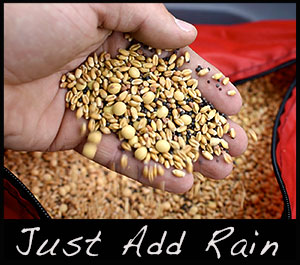
It’s a great time to get your fall food plots started. A little rain and you’ll have fresh, tender food all the way through late season.
Pre Season Scouting – Episode #298
Wanna see more deer? Scout the oaks now! Acorns can be a HUGE factor in deer patterns. We’ll show you how we scout acorn production. Then we create a new hidey hole food plot by hand. We’ll show you a step-by-step guide to get this killer spot started. Trouble! We found a problem in one of our best hunting plots – then we found a solution. We’ll show you how we ROSE ABOVE the problem.
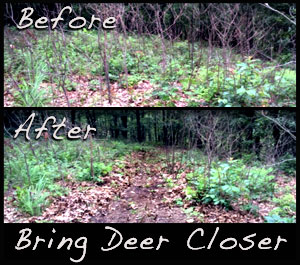 Tip of the Week:
Tip of the Week:
Bring deer closer to your stand by creating paths of least resistance in key areas.



